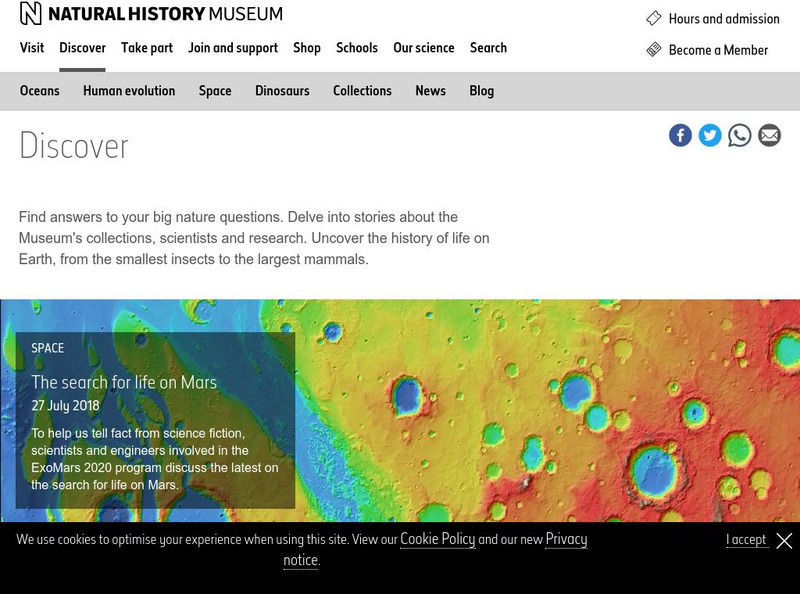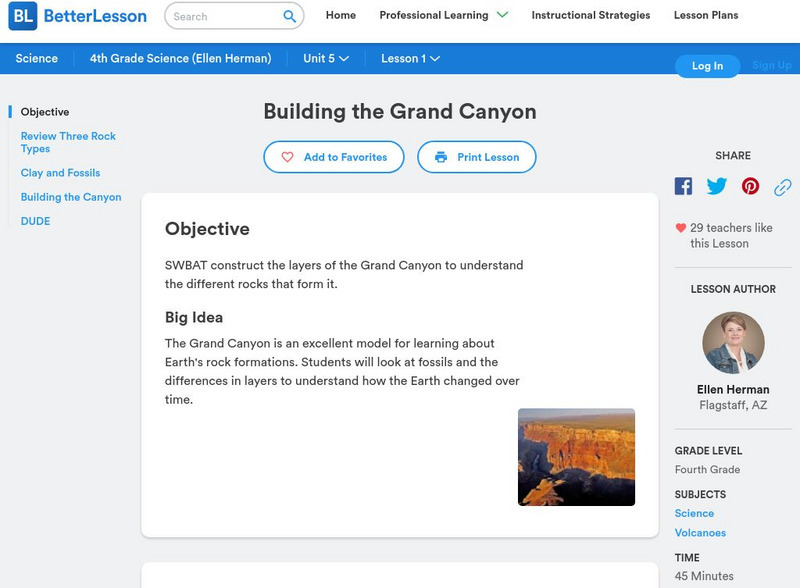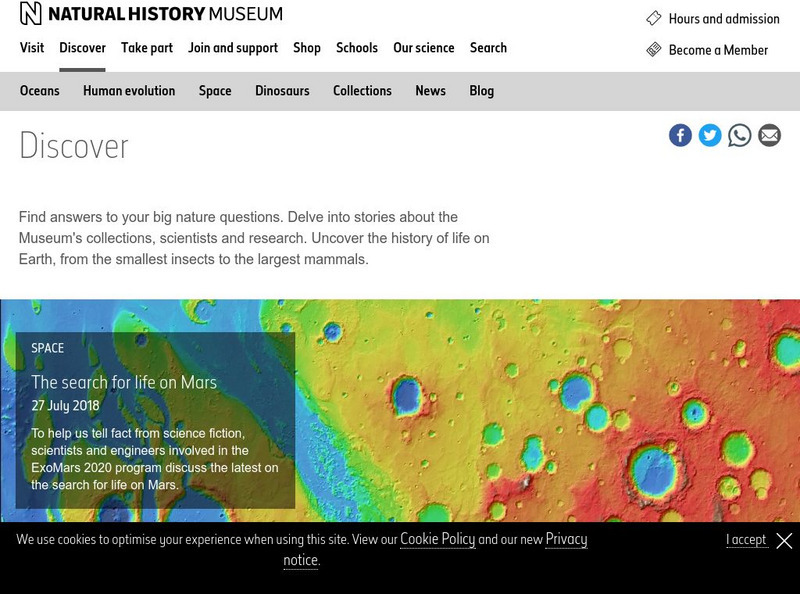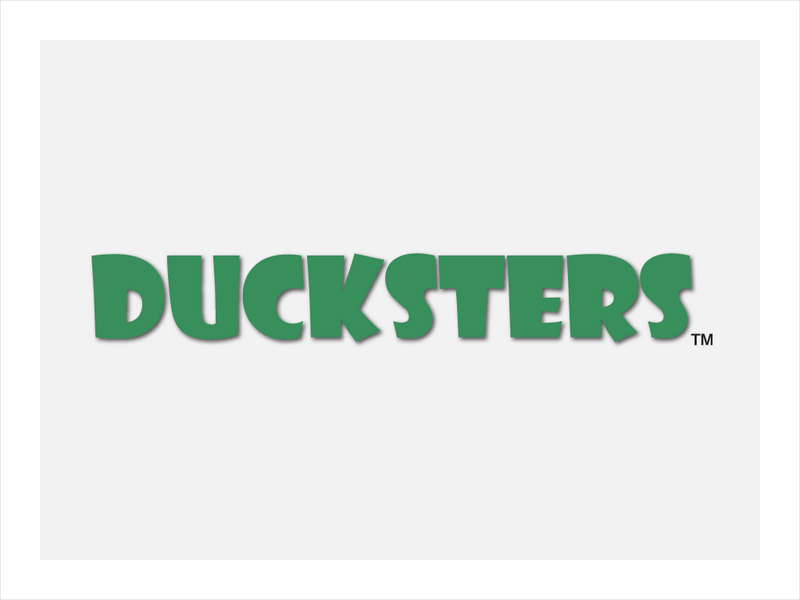Curated OER
Dino Dung!
Young scholars examine how there is more to poop than they think! After reading through material, they answer a series of questions on coprolite, and explore the diet and physical attributes of dinosaurs, as well as their environment.
Curated OER
LESSON PLANS (print version) pdf What is a Fossil?
Students can better explain how mould and cast fossils occur when they make their own cast fossils using plaster of Paris and objects such as shells, bone or even their own hand or footprint.
Curated OER
Investigation 1 - Identify & Compare Fossils
Fourth graders examine different items to see if they can recognize fossils. This be an introduction to the different fossils they be studying later and help them make inferences about past environments of Utah.
Curated OER
A Scientific Approach to Teaching about Evolution
Students examine fossils and analyzing their significance in relation to theories of evolution. Hand-outs are provided. This lesson could be supplementary to a broader unit on evolution or geology.
DOGO Media
Dogo News: Pterosaur Found in Utah Quarry Had 110 Teeth
Read about the unusual characteristics of a pterosaur discovered in Utah. Includes video.
Natural History Museum
Natural History Museum: Fossil Formation
As part of a larger online exhibit on fossils and what fossils are, this site specifically deals with the formation of fossils. A six-step, detailed chart is provided with specific information explaining each step.
Children's Museum
The Children's Museum of Indianapolis: Mold and Cast
Students will define the term fossil, identify the difference between a mold and a cast fossil, and understand how scientists use models to learn about the physical structure of something in the natural world.
Georgia State University
Georgia State University: Hyper Physics: Fossil Distribution
One of the first lines of evidence suggesting the existence of plate tectonics was the discovery of very similar fossils in rock masses separated by vast distances and by ocean expanses. It suggested that those land areas had in the past...
Science Education Resource Center at Carleton College
Serc: Identifying Fossils: Exploring the Mississippi River Bluffs
Students investigate fossils found in the Decorah Shale found in the Mississippi River bluffs. They will determine the name and description of the most common fossils. They will also determine how old the fossils are and what the...
Other
Carbon 14 Dating
Seven pages all about Carbon 14 Dating. Information on half-life, Carbon 14 used to date specimens and artifacts, limitations, charts and graphs. Michael E. Brown Ph.D. contests that the limitations of Carbon 14 dating support the theory...
Georgia Department of Education
Ga Virtual Learning: Historical Geology
In this interactive tutorial you will explore how geologists use clues in rocks to determine the order in which rocks formed. Learn how principles of radioactivity are used to assign actual ages to rocks. Students will explore fossils...
Better Lesson
Better Lesson: Building the Grand Canyon
The Grand Canyon is an excellent model for learning about Earth's rock formations. Students will look at fossils and the differences in layers to understand how the Earth changed over time. Resources included are detailed instructions...
Natural History Museum
Natural History Museum: Types of Fossils
This particular site is part of a larger online exhibit from the Natural History Museum covering various aspects of fossils and fossil research. Here, seven types of fossils are listed and each type is given a picture representation.
Museums Victoria
Museum Victoria: Pseudofossils: Concretions and Dendrites
Pseudofossils are materials that are sometimes mistaken for fossils. They include concretions and dendrites, described here.
Science Struck
Science Struck: The Meaning of Index Fossils Explained
Explains the importance of index fossils for the dating and chronology of events in the fossil and geological records. Discusses uses and examples of index fossils in the Cenozoic, Mesozoic, and Paleozoic Eras.
CK-12 Foundation
Ck 12: Fourth Grade Science: Earth Science: Fossils
[Free Registration/Login may be required to access all resource tools.] Discusses what fossils are, how they form, and what scientists can learn from fossils.
Canadian Museum of Nature
Canadian Museum of Nature: Dinosaurs: Archaeopteryx Lithographica
Is it a feathered dinosaur, or the ancestor of birds? Find out about the Archaeopteryx lithographica whose fossil remains show feathers similar to that of a bird, and whose skeleton resembles that of a dinosaur.
Ducksters
Ducksters: Earth Science for Kids: Fossils
A site for students to explore the Earth science subject of fossils including the ways fossils form, types such as trace and body, fun facts, collecting, and where they are found.
Science Struck
Science Struck: Types of Fossils
Describes four different kinds of fossils and how they form.
















